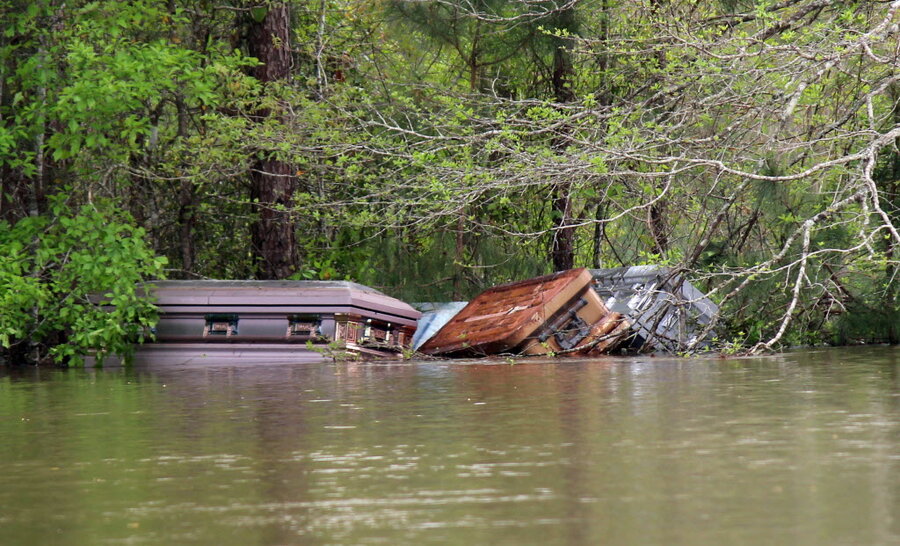How fast is New Orleans sinking? Faster and faster, says new study
Loading...
New Orleans is sinking, according to a study using NASA airborne radar. The subsidence, or sinking rates, of the city and surrounding areas is caused by naturally occurring geologic and human-caused processes. According to this latest study, subsidence is happening at higher rates than what previous data has shown using different kinds of radar, which before had been lower resolution and not as spatially extensive.
The study took place from June 2009 to July 2012 and was a joint effort by scientists at NASA's Jet Propulsion Laboratory in Pasadena, Calif.; University of California, Los Angeles; and the Center for GeoInformatics at Louisiana State University, Baton Rouge.
"Agencies can use these data to more effectively implement actions to remediate and reverse the effects of subsidence, improving the long-term coastal resiliency and sustainability of New Orleans," said Cathleen Jones, Jet Propulsion Laboratory scientist and author. "The more recent land elevation change rates from this study will be used to inform flood modeling and response strategies, improving public safety."
Up to two inches a year were the highest subsidence rates found, observed mostly near the Mississippi River by industrial areas such as Norco and Michoud. Other high subsidence rates were found in the city's Upper and Lower Ninth Ward, Metairie, and Bonnet Carré Spillway, where the water levels hiked up another 1.6 inches a year.
The subsidence is primarily caused by groundwater pumping and surface water pumping (known as dewatering). Other factors include faulting; deposited sediments weighing down the Earth's crust; human withdrawal of water, oil, and gas; shallow sediments compacting; and perpetual land movement from glaciers during the last glacial period.
Louisiana has been among the US locations hardest hit by climate change. The government recently set aside a $48-million grant to move the entire community of the sinking Isle de Jean Charles to drier land. Washington, D.C. is also sinking and could drop at least six inches in the next hundred years, according to researchers. Moreover, 10,000 refugees from the Marshall Islands, which have sunk to more than six feet above sea level, have sought refuge in Arkansas, escaping the dire consequences of climate change at home.
Overall, global sea levels have risen about three inches since 1992 because of global warming. Scientists predict that they can rise another three feet in the next century or two. In some areas, sea levels have risen up to nine inches. The rising sea levels are caused primarily by the expansiveness of warm water, which takes up more space than cooler water, and the melting of the ice caps, during which more water runs into the ocean.
"People need to understand that the planet is not only changing, it's changed," said NASA cryosphere program scientist Tom Wagner. If global temperatures rise by another 6 degrees Fahrenheit the next century, causing sea levels to rise, between 20 and 31 million Americans could lose their homes.
Facing the imminent consequences of climate change, many communities are stepping up to take action. From the local level, protest and public indignation has helped close down coal-burning power plants, which now provide only a third of US electricity, as compared with more than half in 1990. Stricter pollution standards and lower natural gas prices have also been factors in the closing of 200 coal-fired plants since 2001, according to the Sierra Club. Meanwhile, localities in south Florida, one of the nation's most at-risk spots, have begun to use recycled water to alleviate the reduction of the freshwater aquifer, threatened by underground sea water pushed inland. Meanwhile, other cities around the country from Boston to Seattle have begun to convert taxi cabs to hybrid fleets, plant gardens on roofs to reduce air conditioning needs, and install solar panels.
"The troops on the ground, the local officials and stakeholders, are acting, even in the face of a total lack of support on the top level," Michael Mann, climate scientist at Pennsylvania State University in State College, Pa., said to Douglas Struck for The Christian Science Monitor. "The impacts of climate change are pretty bad and projected to get much worse if we continue business as usual. But there still is time to avert what we might reasonably describe as a true catastrophe. There are some signs we are starting to turn the corner."







